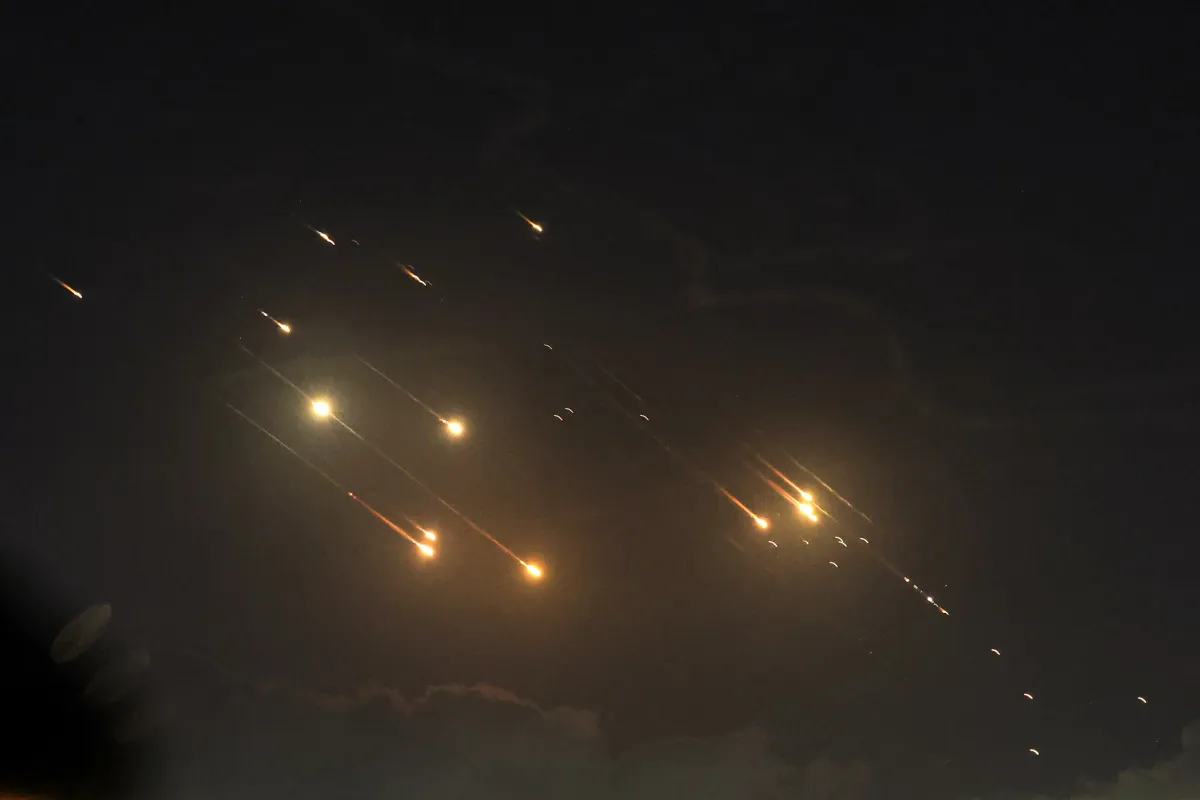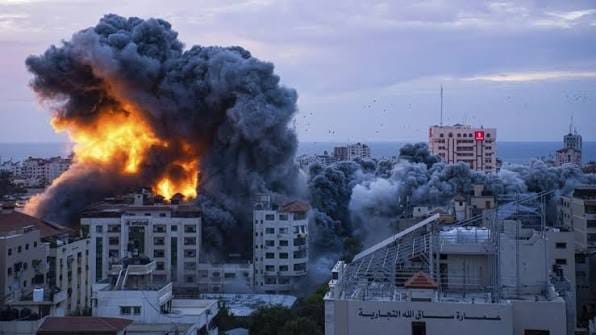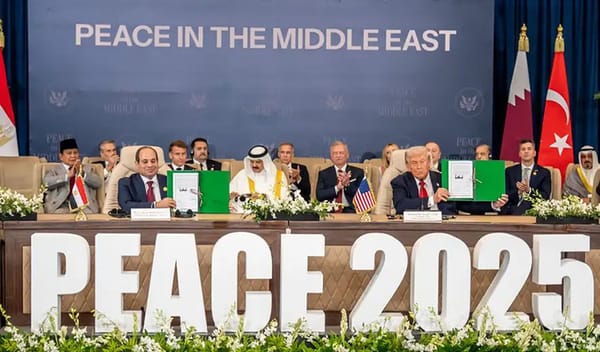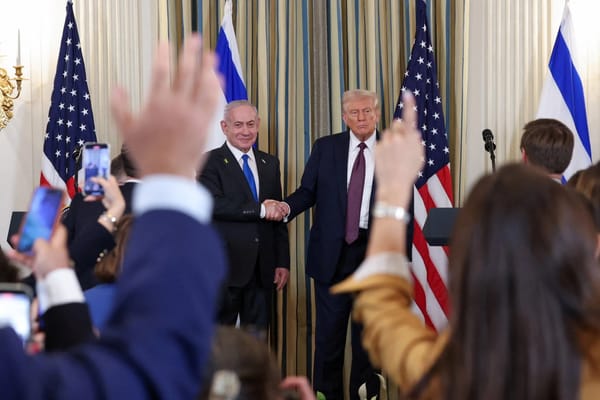What's the what's the scenario?

The huge US decision about entering the Iran-Israel war feels strangely familiar.
For the last fifteen years or so, my graduate level Elliott School course on the International Relations of the Middle East has included a simulation exercise built around the scenario of Israel requesting that the United States join a war against Iran to deal with its nuclear weapons program. The scenario varied from year to year, depending on current conditions, but the core typically looked like this one from Fall 2023:
Early this morning, Israeli Prime Minister Benjamin Netanyahu informed the White House that signals intercepts and a high-ranking Iranian source have revealed that Iran is preparing to test a nuclear weapon and threaten to use it against Israel if it does not end its invasion of Gaza. We have to this point been unable to independently verify the Israeli intelligence. Netanyahu requested U.S. support for an immediate military strike against Iran in order to destroy its hidden nuclear facilities and materials before Iran can carry out its nuclear test. Netanyahu refused to consider any pause in the military campaign in Gaza and argued instead that a decisive military campaign against Iran was the key to dealing with all dimensions of the regional crisis. Netanyahu said that the military campaign would focus only on the nuclear sites and would not involve ground forces, but speculated that a successful strike could destabilize the Iranian regime and degrade its capabilities sufficiently to allow for a popular uprising to overthrow it. He further argued that despite their public opposition to war and their public posturing on Gaza, such military action against Iran would be welcomed by key US allies in the Gulf such as the UAE and Saudi Arabia. He further warned that Israel planned to act with or without American support, but would prefer to act together to increase the chances of success.
How should the White House respond to Prime Minister Netanyahu’s request for U.S. support for immediate military strikes against Iran? We have been unable to independently confirm the intelligence behind his request. We assess that an Israeli strike without our support would be unlikely to set back the Iranian nuclear program more than five to six months, but with our unique capabilities could deal a more decisive blow. We see a significantly greater risk of regional escalation than presented by Netanyahu, including not only retaliation by Hezbollah but also the targeting of our Gulf allies which could significantly disrupt the flow of oil. We do not assess that the Iranian regime is currently at risk of serious destabilization, but see significant risks of regional instability in the event of state failure or regime collapse. Our options include: support military action against Iran and join the air campaign; support the campaign publicly but do not join it; oppose the campaign unconditionally; or make our support conditional on a Gaza ceasefire and movement towards a Palestinian state in line with the demands of our Gulf partners.
The students had to write a detailed decision memo on their own, and then hash it out in a timed, high pressure simulated NSC decision meeting and issue a recommendation to the president. It was always great fun, and occasionally...explosive. Most of the groups over the years gravitated towards opposing the campaign, often on the basis of skepticism about the unverified intelligence but also for fear of regional escalation and fierce opposition to anything resembling another Iraq war. But many of them also recognized the urgency of the scenario and the risks of Iran obtaining nuclear weapons, as well as the opportunity to use American participation to put pressure on Israel on the Palestinian issue, and ended up recommending some sort of conditional participation. And many of them also proposed using the threat of American participation in the war to bring Iran to the negotiating table (as Trump seems to be thinking, as best anyone can tell).
It's grimly fascinating to watch the hell scenario I concocted for that simulation exercise now play out in real time. It's revealing that I was able to use variations of the same scenario for well over a decade with only minor contextual variations; I wonder what new nightmare scenario I'll come up with for the fall semester. The balance of power now is very different from past iterations, after the decimation of Hezbollah, fall of Assad, and Russian quagmire in Ukraine, but virtually all of the other issues remain basically the same. Let's hope, against all signs to the contrary, that Trump's national security team is at least almost as well-prepared to grapple with these issues – and considered all the angles as rigorously – as Elliott School graduate students have over the last fifteen years.
While we wait with clenched teeth to see how Trump's team handled the scenario, here's some background reading to help take your mind off the excruciating tension. On Monday, I recommended a few books on Iranian strategy: Iran's Grand Strategy, by Vali Nasr; Ariane Tabatabai's 2019 No Conquest, No Defeat, Mohammad Ayatollahi Tabaar's Religious Statecraft, and Afshon Ostovar's recent Wars of Ambition. Here's a few recent articles that I found useful:
- Afshon Ostovar, "How Iran Lost," Foreign Affairs (June 18)
- Daniel Kurtzer and Steven Simon, "America Should End Israel's War on Iran – Not Join It," Foreign Affairs (June 18)
- Richard Nephew, "Can Israel Destroy Iran's Nuclear Program?" Foreign Affairs (June 14).
- Eskandar Sadeghi-Boroujerdi, "Culmination," New Left Review (June 17)
- Dalia Dassa Kaye, "Israel and Iran - A War With No Off Ramp" Just Security (June 17)
- Avishay Ben Sasson-Gordis, "Israel Has Learned the Wrong Lesson From Its Military Successes," World Politics Review (June 17)
- Ilan Goldenberg, "Israel and Iran at War - What I am Watching" (June 17)
- Mona Yaqoubian, "Can the Gulf's Iran Policy Survive the War?" Foreign Policy (June 17)
- Elizabeth Saunders has an epic thread of relevant work from political science on Bluesky: check it out here.
More to come soon, I'm afraid.



